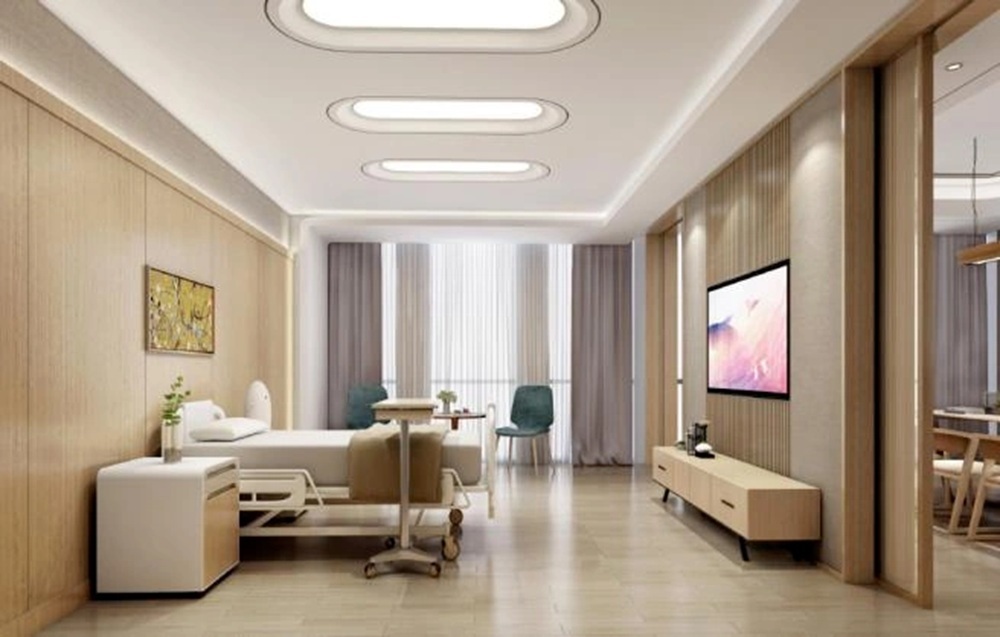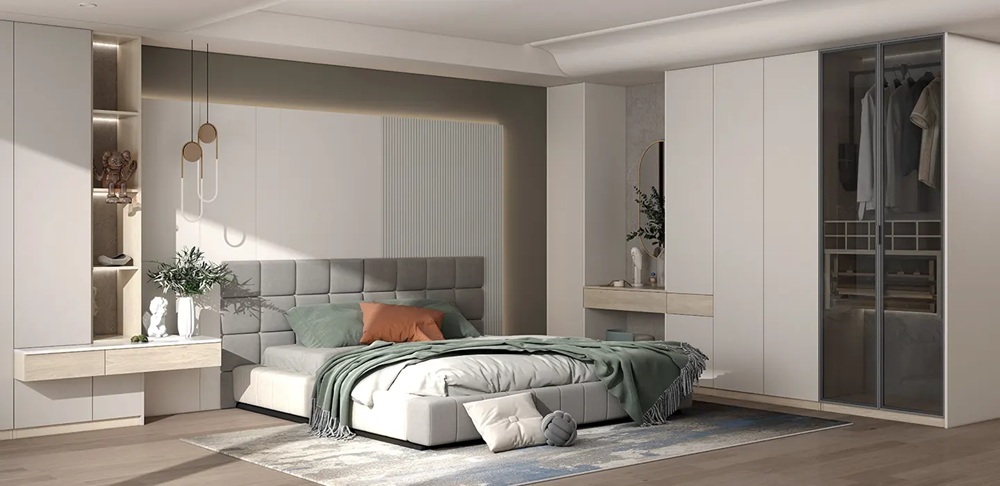Noise pollution represents one of the most persistent challenges in hotel guest satisfaction. While properties invest heavily in soundproofing walls and ceilings, they often overlook a significant source of guest disturbance: the furniture itself. Squeaking bed frames, scraping chair legs, rattling wardrobe doors, and rumbling drawers can undermine otherwise excellent soundproofing efforts. For hotel operators seeking to enhance guest comfort and improve satisfaction scores, understanding the elements that contribute to furniture noise—and how to mitigate them—has become increasingly crucial in competitive markets.

The Impact of Furniture Noise on Guest Experience
The psychological impact of furniture noise extends far beyond simple annoyance:
- Sleep disruption from creaking beds or squeaking closet doors
- Concentration difficulties for business travelers working in-room
- Heightened awareness of neighboring room activities
- Perception of poor quality regardless of actual furniture construction
- Negative reviews specifically mentioning noise issues
In my experience consulting with luxury hotels, properties that implement comprehensive noise-reduction furniture strategies typically see 12-15% improvements in guest satisfaction scores related to room quietness. This improvement translates directly to higher overall satisfaction ratings and increased likelihood of return visits—a compelling business case for addressing furniture acoustics.
Construction Methods for Sound Reduction
Structural Design Principles
The foundation of quiet furniture begins with structural design:
- Triangulated support structures reducing flex points
- Reinforced corners preventing frame movement
- Balanced weight distribution minimizing pressure points
- Solid center supports eliminating bed frame flex
- Overbuilt internal framing adding mass and stability
Case studies show that beds designed specifically for acoustic performance can reduce movement noise by up to 70% compared to standard commercial frames, despite appearing identical to guests. This hidden performance difference dramatically impacts sleep quality, particularly for light sleepers.
Joinery Techniques
Connection methods between furniture components significantly impact noise performance:
- Mortise and tenon joints providing rigid connections
- Dovetail construction eliminating lateral movement
- Reinforced corner blocking preventing frame distortion
- Metal-to-metal connections isolated with nylon bushings
- Wood joinery reinforced with hidden steel components
Hotel furniture manufacturers in China have increasingly adopted traditional joinery techniques combined with modern materials, creating pieces that maintain structural integrity through thousands of use cycles without developing the loose connections that cause squeaks and creaks.

Material Selection for Acoustic Performance
Primary Construction Materials
Base material selection fundamentally influences acoustic properties:
- Engineered wood products offering consistent density and reduced movement
- Hardwoods with specific gravity ratings above 0.5 for frame components
- Composite materials formulated for vibration dampening
- Aluminum extrusions with internal dampening chambers
- Steel components with precision tolerances preventing movement
Noise-Dampening Components
Strategic addition of dampening materials reduces noise transmission:
- Neoprene gaskets between moving components
- Felt pads precisely sized for moving contact points
- Rubber isolation mounts for legs and bases
- Silicone bumpers for drawer stops and door closers
- Cork or rubber lining in high-contact areas
I recently inspected a hotel renovation where the designer had specified rubber isolation mounts under all case goods. The property reported a 30% reduction in noise complaints after implementation—a dramatic improvement from a relatively simple specification change.
Hardware Solutions for Silent Operation
Silent Drawer Systems
Advanced drawer systems eliminate traditional noise sources:
- Ball-bearing slides with integrated soft-close mechanisms
- Undermount glides eliminating metal-to-metal contact
- Precision-fit drawer boxes reducing movement within cases
- Cushioned stops preventing impact noise
- Self-aligning mechanisms eliminating racking and binding
Door and Hinge Technology
Door movement represents a primary noise source that modern hardware addresses:
- Soft-close hinges preventing door impact
- Multi-point closing systems eliminating warping
- Magnetic door catches replacing mechanical latches
- Precision-engineered pivot hinges reducing stress points
- Integrated dampening systems absorbing closing energy
OPPEIN wardrobes exemplify this technology integration, featuring silent-operation hardware systems that eliminate the typical sounds associated with closet use. Their doors operate with a whisper-quiet precision that maintains performance integrity even after years of heavy use—a critical consideration in hotel applications where doors may be opened and closed thousands of times annually.

Floor Interface: Eliminating Scraping and Movement
Flooring Protection Systems
The interface between furniture and flooring creates significant noise potential:
- Micro-adjustable glides accommodating uneven surfaces
- Felt-bottom leg protectors for hard flooring surfaces
- Silicone-base protectors for carpet applications
- Self-leveling feet eliminating rocking motion
- Weight-distributing bases preventing indentation and movement
Area Rug Integration
Strategic use of area rugs provides acoustic benefits beyond aesthetic considerations:
- Dense-pile rugs absorbing sound vibrations
- Non-slip rug underlays preventing movement
- Extended rug dimensions containing all furniture contact points
- Bound edges preventing trip hazards and edge curling
- Stain-resistant fibers maintaining appearance despite heavy traffic
Have you considered how a strategically placed area rug affects not just the visual aspect of a hotel room but its entire acoustic profile? The difference in sound transmission between furniture placed directly on hard flooring versus on quality area rugs can be as significant as 15-20 decibels—a difference immediately perceptible to guests.
Maintenance Protocols for Sustained Quiet Performance
Preventative Maintenance Systems
Maintaining acoustic performance requires systematic maintenance:
- Quarterly tightening schedules for all fasteners
- Systematic lubrication of moving parts with non-staining lubricants
- Immediate attention to developing noises before component failure
- Replacement of wearing parts before noise development
- Documentation of problem areas informing future purchasing
Housekeeping Training
Daily maintenance significantly impacts noise development:
- Proper moving techniques avoiding structural stress
- Correct cleaning methods preventing hardware damage
- Early reporting systems for developing issues
- Understanding of furniture construction basics
- Recognition of warning signs preceding failure
In my experience working with hotel operations teams, properties that implement furniture-specific maintenance training for housekeeping staff typically extend furniture acoustic performance by 30-40% compared to properties without such programs.
Testing and Selection Methodologies
Acoustic Performance Testing
Quantifiable testing provides objective selection criteria:
- Standardized weight applications measuring structural noise
- Repetitive motion testing identifying developing noise points
- Impact response measurement quantifying sound absorption
- Vibration analysis pinpointing resonant frequencies
- Comparative assessment under identical conditions
In-Context Evaluation
Laboratory testing must be supplemented with realistic assessments:
- Mock-up rooms with actual flooring surfaces
- Testing under varying humidity conditions
- Assessment after thermal cycling
- Evaluation by multiple users of varying weights
- Long-duration testing revealing developing issues
Case studies from luxury hotel groups show that comprehensive pre-purchase testing programs, while adding 3-5% to initial furniture costs, typically reduce replacement needs by 20-30% over the furniture lifecycle—delivering significant return on investment while improving guest experience.
The Balance of Aesthetics and Acoustic Performance
The greatest challenge in specifying acoustically superior furniture lies in maintaining design integrity:
- Clean-lined contemporary designs with hidden reinforcement
- Visual lightness achieved despite structural mass
- Design consistency across acoustically diverse pieces
- Integration of technical elements without visual compromise
- Customization capabilities accommodating property-specific needs
The most successful acoustic furniture programs achieve this balance through close collaboration between designers, engineers, and manufacturers, creating pieces that perform flawlessly while meeting aesthetic requirements.
For hotels seeking competitive advantage in increasingly crowded markets, the subtle but significant impact of acoustically optimized furniture represents an opportunity to differentiate the guest experience through attention to details that guests may not consciously notice—but will definitely appreciate during their stay. Through thoughtful specification, proper maintenance, and strategic replacement planning, properties can create truly peaceful environments that enhance rest, productivity, and overall satisfaction.






